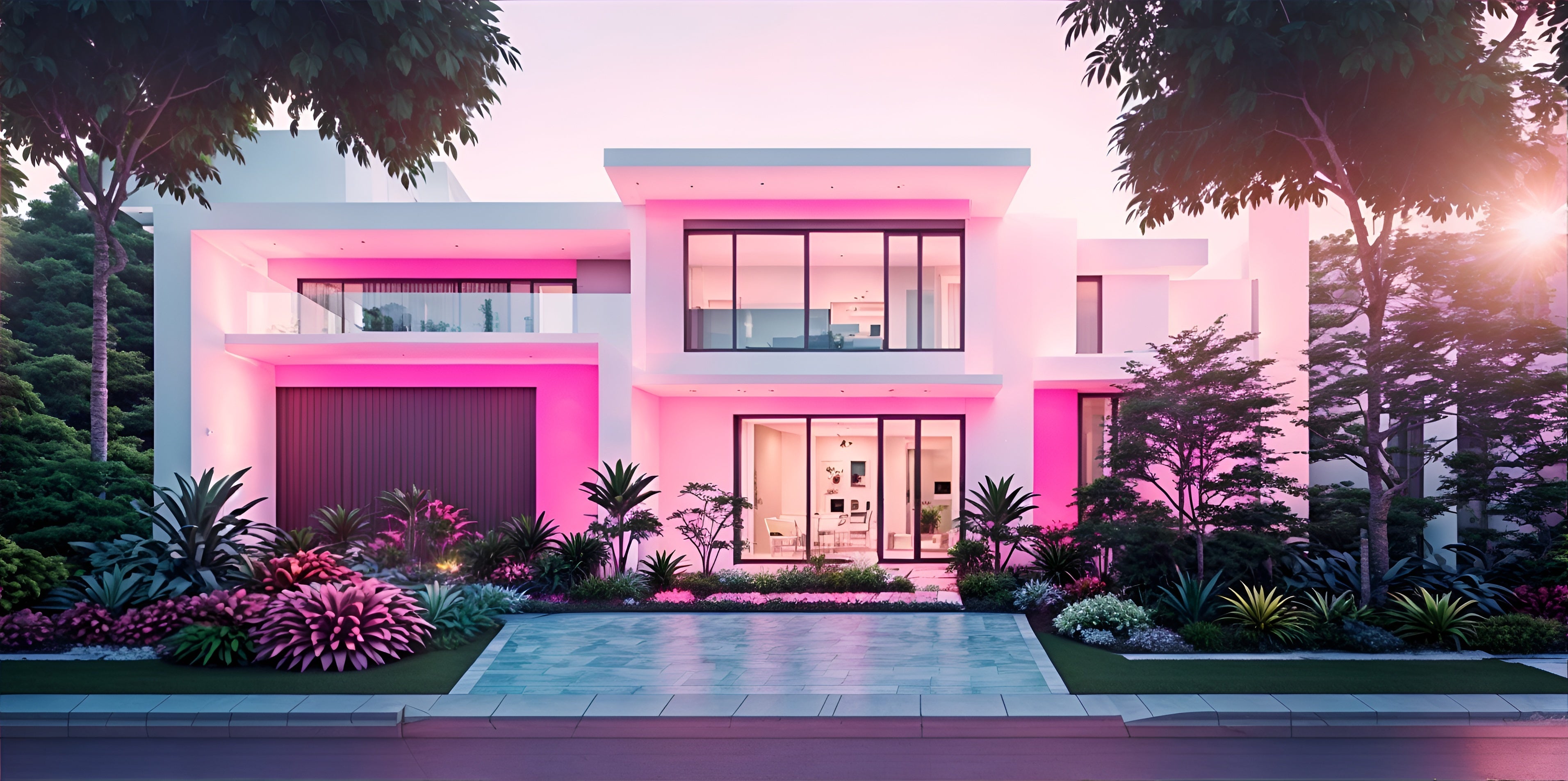A multistory Malibu beach property complete with a bubblegum pink exterior and a unique modular construction has posed an interior design challenge for decades. Coming in under 50 inches tall, Barbie’s Dreamhouse offers its owners endless options to decorate inside its plastic walls. “As a kid, it served as inspiration—for stories, for what a house could be, for how a house could look—and the freedom to try all of it,” says Los Angeles–based designer Mandy Cheng. “You slowly watch your little hands make a house come together, and it’s the first time it all kind of clicks.”
Mattel first launched the Barbie Dreamhouse on the market as a one-level, midcentury modern cardboard toy in 1962. The dollhouse evolved with the times and grew into an expansive backdrop for play, creativity and plenty of pink. The current iteration even has a waterslide. It’s no surprise that many interior designers credit the toy as a vehicle to discover their passion for homes. “I think the freedom to make your own design choices and do things your own way was dreamy in and of itself,” says New York interior designer Ariel Okin.
“I changed the house all the time, moving furniture around and around,” remembers Los Angeles–based Brigette Romanek. “It was so much fun and such a creative process. I made covers for the beds and curtains. Yes, they were terrible, but I didn’t care. It helped to form me into a creative being.” Patty Cassidy, interiors director of Ike Baker Velten in Oakland, California, adds, “It meant everything to me and was quite formative. It was a creative outlet, whether [or not] I knew that at the time. It was a space to play with shapes, colors and textures.”
“What was brilliant about the Dreamhouse was that it was built out enough to lend an overall structure, but you could change the furniture around to create a layout that worked for your Barbie,” says New York–based interior designer Sara Story. “If your Barbie didn’t like to cook, no problem—let’s turn the kitchen into a beauty salon room! Did your Barbie like to dance? Let’s turn the extra bedroom into a dance studio. The possibilities were endless and there were no rules.”
Emma Kemper echoes Story, adding that the flexibility of the dollhouse helped shape her views on what a home could be. “I think that is exactly what you should expect out of a ‘dream home’—a place where what you say, goes,” says the New York–based designer.
Barbie’s Malibu abode could not only teach children how to decorate a home, but also give a few extra-creative kiddos valuable skills around construction and expansion. “The Dreamhouse was just the gateway to the larger palaces and estates I would create in my bedroom or basement,” says Chicago designer Jenny Brown. “No piece of furniture or fabric was off-limits. Inspired by Swiss Family Robinson and Little Orphan Annie, I would create tree houses for Barbie by stacking chairs on top of each other and town houses on an antique China cabinet my parents stored in our basement.”
For New York–based Becky Shea, playing with the toy was a harbinger of the eventual construction focus in her design career. “One very fond memory was when my younger brother would go into the Dreamhouse and accidently knock things over or detach windows and doors,” she recalls. “It made me think about renovations at a very young age. I had to rebuild the house a few times, which is interesting when you flash forward, since my core focus is full guts and ground-up builds.”
It’s no surprise that budding designers would find ways to expand outside the confines of those plastic walls. “Honestly, I wished the Dreamhouse of the early ’90s had more room for interpretation or personalization,” says Los Angeles–based designer Erika Montes of Marmol Radziner, who explains she decided to build her own wooden “dream house” in her parents’ basement instead. Zuni Madera of Foley&Cox also created a version with a design team made up of childhood friends. “We were using our imagination to build it together,” she says. “While the Barbie Dreamhouse is most little kids’ dream playhouse [as is], I enjoyed being creative and inventive with the concept of it.”
Houston-based Jessica Duce even commandeered a closet in her childhood home to transform into her “Barbie World.” “I went from my cardboard house to a full-on Barbie brownstone,” she says. “My mom let me paint inside the closet, and I created wallpaper patterns and colored them in. I would have ‘reveals’ after days of work and show my parents my newest designs and layouts.”
One thing every former Barbie Dreamhouse owner can agree on is that they absolutely can’t wait for the upcoming movie and the character’s empowering, maximalist impact on design today. “If you want a pink sofa, get a pink sofa. If you want to paint your walls with pink and yellow flowers, do it. There is no reason to restrain your palette for anyone else,” says Kemper. “Make your home comfortable for you—not everyone else!”
Homepage image: ©Usman/Adobe Stock





























